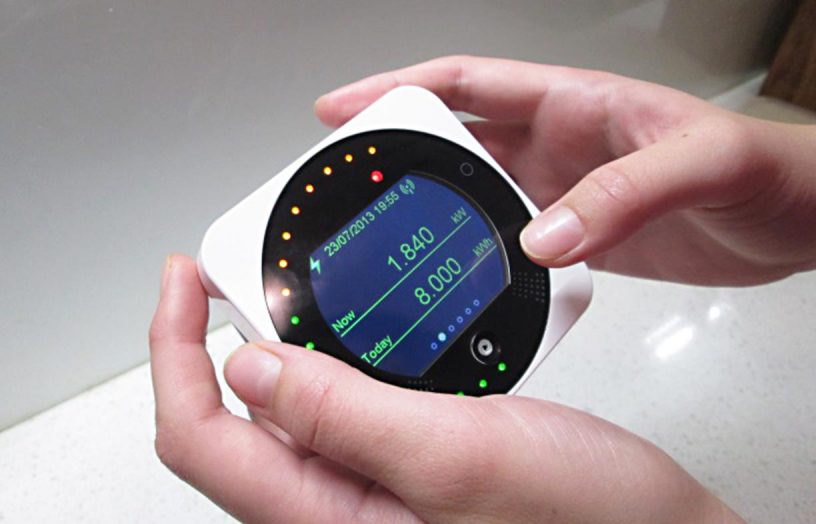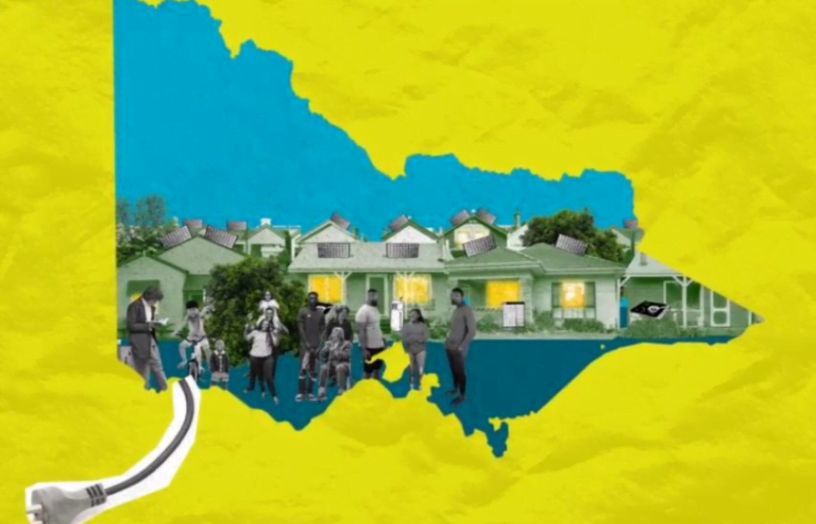Not drowning … waving?
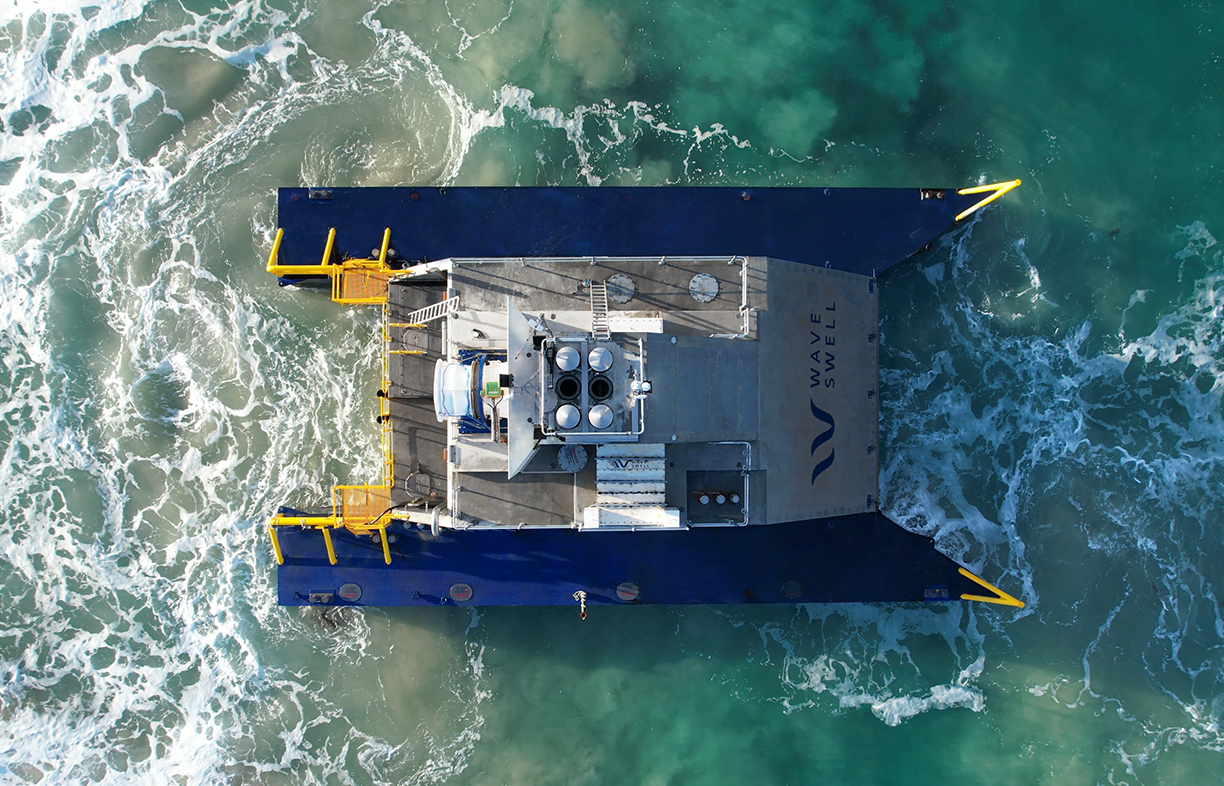
Image: Wave Swell
Who amongst us has not stood on a beach, looked out at the crashing surf … and thought, “Boy, that’s a whole lot of free energy”? Unfortunately, though, harnessing the power of the ocean isn’t quite as easy as it might seem. Emily Jarvie takes a deep breath and dives into the world of wave energy.
Australia’s first wave power trial was carried out way back in 1909. More than a century later, the idea of drawing energy from the waves that crash onto our thousands of kilometres of coastline remains an alluring one—but one that has proven deceptively difficult to implement.
As we are an island nation, it seems intuitive that Australia would have plenty of wave power to access. However, until recently there was suprisingly limited knowledge about the resource, including its temporal and spatial variability and spectral characteristics. There was also a limited evidence base and methodology for assessing the impacts of wave energy extraction on the marine and coastal environment.
Consulting the Atlas
The CSIRO carried out the Australian Wave Energy Atlas project between 2014 and 2018 to address these knowledge gaps around Australia’s wave energy resources. The results of the project were promising: our southern coastline has large, consistent swells that create the ideal conditions for wave power. The CSIRO estimates that wave energy could contribute up to 11% of Australia’s energy by 2050—enough electricity to power the city of Melbourne.
However, Dr Mark Hemer—the CSIRO’s Ocean and Atmosphere Principal Research Scientist and Program Leader for the Offshore Renewable Energy Systems Program at the Blue Economy Co-Operative Research Centre—explains that while Australia has plenty of available resources, the question isn’t so much whether waves can generate power; it’s whether they can do so in a cost-effective manner. “[Wave energy resources are] similar to Australia’s solar resource[s],” he says. “It comes down to whether you can harness [the energy] and make it [cost-]effective.”
Dr Hemer worked on the Australian Wave Energy Atlas project, and has been involved in the offshore renewable energy sector for the past 15 years. He says that the project has proven a valuable resource in attracting investment: “Industry developers that have carried on in Australia really have made use of the Atlas to inform and justify the resource opportunity available, to attract support and investment for their projects.”
However, he also says that the initial optimism about Australia’s wave energy potential has been dampened somewhat in the years since the project was completed. “At the outset, the view was that wave energy could very much contribute to our connected grid and into our national electricity market. It has promise in that respect. In the years since, there has been real recognition of the challenges to getting into that market in terms of costs of technology.”
The challenges facing Australia’s wave energy sector
So what are these challenges? Dr Hemer explains that the main issue with wave energy in Australia is getting the technology competitive in terms of cost with other renewables, such as solar generation and storage. “The challenge also lies in having a system that is both robust and low-cost,” he says. “Any wave technology needs to withstand the forces it operates in, being an offshore environment, which drives up the cost.”
As a result of these barriers, several prominent wave energy projects have failed. In 2014, a $233 m wave power project proposed for Portland in Victoria by American company Ocean Power Technologies was abandoned after the company declared it was not commercially viable. In 2019, the Albany Wave Energy Project—which was unveiled to much fanfare before the 2017 Western Australian state election and aimed to build the country’s first commercial-scale wave farm—met a similar fate. The project was never completed due to the company’s financial situation and the withdrawal of funding by the Western Australian government.
Another challenge is the lack of research around the environmental impacts of various wave energy technologies. Part of the problem is the lack of empirical evidence: “There have been relatively few deployments to monitor environment interactions,” explains Dr Hemer. “To this point, though, there has been little evidence to suggest there are severe environmental effects associated with the technology.”
How do you get energy from waves, anyway?
Unlike, say, the solar panel, there’s no single technology that stands out as the best way to capture wave energy. This means that new ideas and new technologies continue to be developed to harness our significant ocean energy resources.
The one thing that all the myriad devices that people have conceived to harness the waves—devices generally referred to as “wave energy converters” (WECs)—do have in common is that their challenge is converting the kinetic energy of waves into electric energy. Of the many different approaches to this, the most common include:
Attenuator devices
These are free-floating structures that are placed parallel to the direction of waves. These use some sort of hinged elements to create a regular flexing motion, driven by the rise and fall of the ocean swell. This motion can in turn be used to generate electricty, usually by using it to drive a hydraulic pump or via conversion into rotary motion.
Point absorbers
These are individual, relatively small devices that are tethered to the sea floor. They can float on the water (like buoys) or be submerged completely. In either case, their motion is used to drives a “power take-off”—essentially a small on-board generator of some sort.
Overtopping devices
These systems contain a ramp over which waves travel into a raised storage reservoir. The reservoir is eventually filled to a higher level than the surrounding ocean, at which point the resulting pressure differential drives some of the reservoir water through a turbine, which is used to generate electricity.
Oscillating water columns
This device also uses a turbine, but one driven by air, rather than water. The “column” is a hollow tube that connects to a larger, semi-submerged chamber. The water level in this chamber rises and falls with the waves. This creates a pressure differential, pushing and/or pulling air through a turbine at the top of the column.
Reasons to be cheerful?
Despite the challenges facing the sector, Dr Hemer is optimistic about several projects around the country. He explains that the Blue Economy Cooperative Research Centre is supporting Western Australian company Carnegie Clean Energy—the company involved in the cancelled Albany project—in the development of a technology to improve the efficiency and effectiveness of its wave energy converters. The new component, called a mooring tensioner, will allow for improvements to the converters’ power take-off, a key part of the device that converts the waves’ kinetic energy into electricity.
Carnegie’s converters are fully submerged point absorbers (see box on facing page), and the mooring tensioner will allow for the use of rotary electrical generators as the power take-off component. As Dr Hemer explains, “This technology is aimed [at] support[ing] cost reductions for wave energy converters. [It works by] balancing the rotary mechanical energy of the system with the mooring line pretension.”
The mooring tensioner also has other applications: Carnegie also plans to deploy it in an upcoming device called MoorPower, which uses their core CETO technology to provide wave power for aquaculture applications—specifically, for barges and other vessels that need to generate their own power offshore. At present, these vessels generally use diesel generators, which are a significant component of the industry’s carbon footprint. Jonathan Fiévez, Carnegie’s CEO, explains, “The aquaculture industry is determined to increase the sustainability of its practises but a particularly difficult challenge is the pollution from offshore power generation. Many feed barges are exposed to energetic wave climates so there’s a huge opportunity to use this energy to provide clean electricity for their operations and remove diesel spill and safety risks at the same time.”
As well as the CSIRO’s investment in Carnegie’s future, Dr Hemer also cites an existing success story for the wave energy industry: a project on King Island in the Bass Strait operated by Australian company Wave Swell. In January, the company installed one of its 200 kW UniWave wave energy generators adjacent to Grassy Harbour, in King Island’s south. The unit is connected to Hydro Tasmania’s grid, and it is being tested alongside existing wind, solar, and diesel resources.
The UniWave technology uses an oscillating water column (see box on page 36) to generate electricity; as waves ebb and flow, they force air through a turbine. However, Dr Tom Denniss, Wave Swell’s co-founder and Executive Chair, says that the company’s technology is a unique slant on the idea of an oscillating water column because it is unidirectional rather than bidirectional. “Using simple hinged flaps, the turbine only needs to be able to cope with airflow from one direction,” he explains.
What makes a good wave energy converter?
Dr Denniss, who has a PhD in mathematics and oceanography and has been working in the wave energy sector since the 1990s, suggests that the three main challenges facing wave energy technology developers are conversion efficiency, survivability, and accessibility.
On the first point, he explains, “Technologies that don’t have adequate conversion efficiency [do] work—but they don’t work very well, because they only convert a small percentage of the [available] energy,” he says.
In terms of survivability, Dr. Denniss explains that, while wave energy technologies can easily survive in average-sized waves, they need to be designed to endure extreme, once-a-century weather events: “You have to design something strong enough to survive those extremes, even though you’ll rarely see them, and you have to find ways of ensuring survivability without incurring high costs to do so.”
For its King Island project, Wave Swell aimed to alleviate this problem by placing its wave energy conversion unit in relatively shallow water, at a depth of 4 m to 5 m. “By going into shallower water,” Dr Denniss explains, “you can limit the size of maximum wave you’ll ever see breaking on the structure, and therefore you’ll limit the maximum force on the structure. As a result, you’ll know exactly how strong [it’ll need to be], and how much that is going to cost.”
He says that having the unit placed in shallower water also addresses the third challenge, accessibility. “Many wave energy technologies are impossible to access readily, or at least in a cost-effective way. Our unit at King Island is between 50 m and 70 m offshore, depending on the tide at the time. All our moving parts are above water, meaning that if [the unit] does need maintenance or reviewing, it can be readily accessed.”
Another challenge for wave power is getting the energy generated to a place where it can be used. But as Dr Denniss explains, the difficulty of this depends on the location of the device: choose your location wisely, and the problem can be mitigated or removed entirely.
“There are some places that are already ideal,” he says. “If you look at Portland in western Victoria, there’s already a huge aluminium smelter there, so there is already very, very strong grid infrastructure running from the Latrobe Valley on the eastern side of Melbourne all the way out to Portland to service this smelter. The infrastructure is already there, the demand is already there, and the waves are fantastic there. There are places like this where it wouldn’t be particularly expensive to set up a whole bank of wave energy units to produce electricity very cheaply.”
How wave energy compares to wind and solar
Wave energy currently contributes very little to Australia’s energy mix because most of its technologies are still new and proving their commercial viability with pilot projects. According to Geoscience Australia, about 75% of Australia’s electricity is currently generated by coal, followed by gas at 16%, hydro at 5%, and wind at around 2%.
However, as the country accelerates its uptake of renewable energy resources, a diverse—and reliable—range of sources will be required. Wave energy advocates argue that it is a more predictable and consistent renewable resource than solar and wind.
Dr Dennis is one such advocate: “Without denigrating the other renewable energy sources, because the world will need them all, wave energy has a higher level of predictability and reliability. With wave energy, you can predict how much you are going to be producing with high accuracy, even days ahead. It’s obvious the limitation of solar is that the sun doesn’t shine during the night at all. Winds can also spring up and die off quickly.”
He does add that having just one renewable source is not the answer. “The answer isn’t to centralise. It’s to decentralise. If it’s done smartly, you can have the smooth generation of electricity with very little reliance on battery storage.”
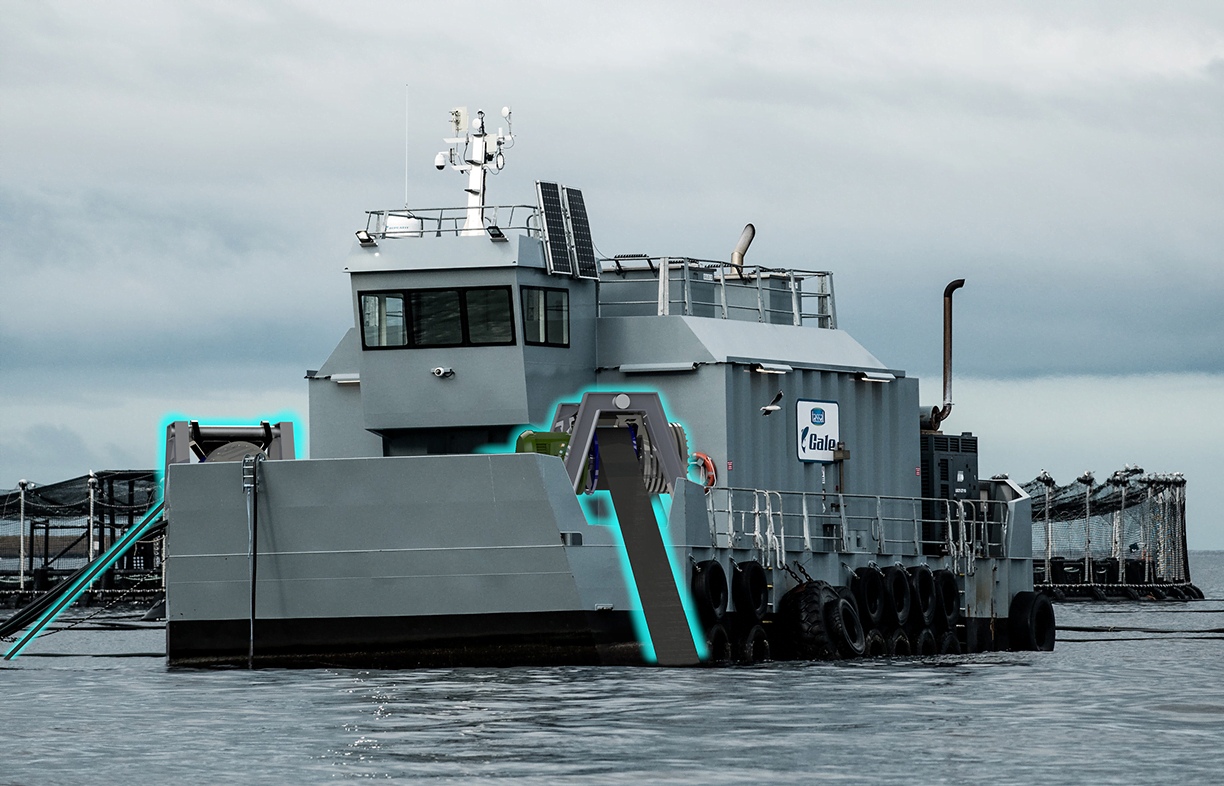
Image: Courtesy of Tassal Operations/Carnegie Clean Energy
The future of wave energy
So what will Australia’s wave energy sector look like in 10 years? Dr Denniss’s opinion is that wave energy technology will be used in more ways than one—for example, the use of wave energy conversion units to form coastal protection by doubling as a breakwater or seawall. “There are many parts of the world that are suffering from coastal erosion because of sea level rise and increasingly severe weather or storm events,” he says.
“If you are going to put in a seawall to protect your coastline because there’s too much energy in the waves, it’s a no-brainer that you should make these seawalls out of [wave energy conversion] units. Instead of reflecting that energy back out to sea, [you can] absorb it and convert it into electricity. Instead of these seawalls being a sunk cost, they will pay for themselves.”
While he concedes that wave energy technology is not yet in a place where it can challenge the primacy of solar and wind, he is full of enthusiasm for, and optimism about, the future. “Wave energy—not all wave energy, but our certainly our technology—could potentially be the lowest cost [source of energy, ahead of wind and solar. It’s still yet to be achieved, but that’s what the potential is.”
Dr Hemer agrees that wave energy still has some way to go to compete with Australia’s other renewable sources in terms of cost. “But,” he says, “it has real potential to compete with the costs of diesel, which is widely used in offshore and other islanded energy systems.”
It’s for this exact reason that Wave Swell is looking to the US state of Alaska as a potential site for overseas expansion—it has great wave energy potential and an islanded, diesel-reliant grid. “There’s no grid to get [wave] energy back to the contiguous USA, but you can use it to produce hydrogen,” Dr Dennis explains. “There is the potential for a new export industry, lots of jobs, and the displacement of costly diesel-fired electricity—which most of Alaska, and certainly all of its remote communities, currently use.”
Closer to home, Dr Hemer predicts that as investment continues to increase in offshore wind technology, opportunities will arise for co-located wind and wave energy production. “Another path is for wave energy to support other offshore ocean operations. For the oil and gas sector, this could support a decarbonisation drive where they want to move away from fossil-fuel-powered activities on their offshore platforms where they can. Other [potential] applications [for wave power] includes its use in aquaculture operations, and in powering ocean observations to improve monitoring and support effective ocean management.”
He adds that Australia has a real opportunity to be a leader in wave energy technology; however, many companies are focusing their efforts overseas. “There’s this loss of intellectual capital from Australia where [wave energy] companies see better support mechanisms for emerging technologies [overseas] than they see [in Australia]. [I] acknowledge that the Australian Renewable Energy Agency has put substantial resources over the years into ocean technologies—but perhaps not to the same level that we see internationally.”
At present, wave energy contributes little to the Australia’s renewable energy mix. However, that may change—and even if it doesn’t, there are many promising applications for emerging technologies in decarbonising offshore activities and powering island economies. The challenge for Australia is to ensure that its advantages in this area don’t simply drain back into the ocean.
This article first appeared in Renew 157.
Further reading
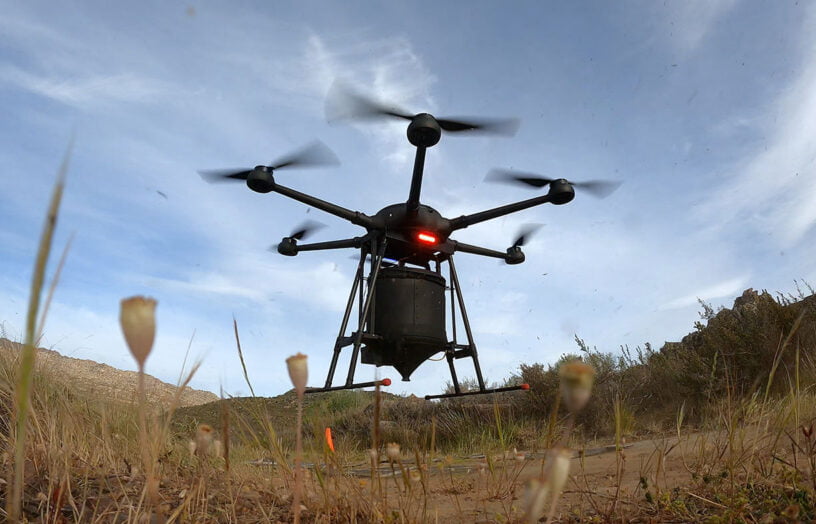 Sustainable tech
Sustainable tech
Breaking the barriers to innovation
Rob McCann looks at the big sustainability innovations of the past, and implores us not to become a nation of laggards.
Read more

